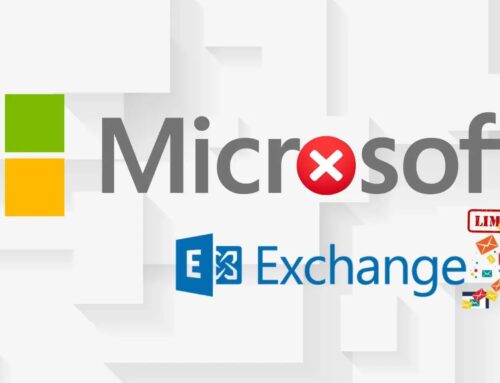
UNC3886 Hackers Exploiting 0-Days in VMware vCenter/ESXi, Fortinet FortiOS, and Junos OS
Singapore’s critical infrastructure is grappling with an urgent and sophisticated cyber threat. Reports confirm that UNC3886, a highly advanced, China-linked persistent threat (APT) group, is actively exploiting zero-day vulnerabilities across essential services. This isn’t a speculative warning; it’s a confirmed campaign targeting vital sectors such as energy, water, telecommunications, and government systems, as of July 2025. The attack vector is particularly concerning: state-of-the-art exploitation of previously unknown flaws in widely deployed enterprise technologies like VMware vCenter/ESXi, Fortinet FortiOS, and Junos OS. For cybersecurity professionals, IT architects, and system administrators, understanding this threat and implementing proactive defenses is paramount.
Understanding UNC3886: The Threat Actor
UNC3886 is categorized as a China-linked Advanced Persistent Threat (APT) group. APTs are distinct from typical cybercriminals due to their sophisticated methodologies, sustained campaigns, and often state-sponsored backing. Their objectives typically involve espionage, intellectual property theft, or disruption of critical infrastructure. UNC3886’s current focus on Singapore’s essential services underscores a strategic intent to compromise or control systems fundamental to national operations. Their ability to leverage zero-day exploits signifies substantial resources and technical prowess, making them a formidable adversary.
The Zero-Day Vulnerabilities Exploited
The severity of the UNC3886 campaign stems from its reliance on zero-day vulnerabilities—flaws in software that vendors are unaware of, or have not yet patched. This gives attackers an unparalleled advantage, as traditional security measures often fail against such unknown exploits. The targeted technologies are cornerstones of modern IT infrastructure:
- VMware vCenter/ESXi: These are foundational components for virtualized environments, widely used in data centers globally. Exploiting flaws here can grant attackers deep control over virtual machines and the underlying infrastructure. While specific CVEs are yet to be publicly detailed in the provided source, the implications for data integrity, system availability, and host-level compromise are severe.
- Fortinet FortiOS: FortiOS is the operating system for Fortinet’s security products, including firewalls, VPNs, and other network security appliances. A vulnerability in FortiOS could bypass perimeter defenses, allowing unfettered access to internal networks. Past critical FortiOS vulnerabilities include CVE-2023-27997 and CVE-2023-29017, highlighting Fortinet’s consistent target status for APTs.
- Junos OS: Junos OS powers Juniper Networks’ routing, switching, and security devices. Compromising a Junos OS device could grant attackers control over network traffic, enable reconnaissance, or facilitate further lateral movement within an organization’s infrastructure. Previous significant Junos OS vulnerabilities include CVE-2022-26162, emphasizing the critical need for vigilance.
Impact on Critical Infrastructure
Targeting critical infrastructure components has far-reaching consequences beyond data theft. Potential impacts include:
- Disruption of Services: Shutdowns or manipulation of energy grids, water supply, or telecommunications networks.
- Espionage and Intelligence Gathering: Access to sensitive government communications and operational data.
- Economic Instability: Damage to national vital services can severely impact economic activity and public trust.
- Supply Chain Compromise: Exploiting widely used software can lead to cascading supply chain attacks affecting multiple entities.
Remediation Actions and Proactive Defense
Given the unpatched nature of zero-days, immediate and comprehensive action is essential. Organizations must implement a multi-layered defense strategy.
Immediate Steps:
- Monitor Vendor Advisories: Closely watch VMware, Fortinet, and Juniper Networks’ official security advisories for patches and mitigation guidance related to these zero-days.
- Network Segmentation: Implement strict network segmentation to limit lateral movement if a system is compromised. Isolate critical infrastructure components from less sensitive parts of the network.
- Least Privilege Principle: Enforce the principle of least privilege for all users and services across vCenter, ESXi hosts, Fortigate devices, and Junos appliances.
- Strong Authentication: Mandate multi-factor authentication (MFA) for all administrative access to these critical systems.
Proactive Security Measures:
- Frequent Vulnerability Scanning: Regularly scan your entire infrastructure for known vulnerabilities. While zero-days bypass this, it helps address other exposures.
- Behavioral Anomaly Detection: Deploy security solutions capable of detecting unusual network traffic patterns or system behavior indicative of compromise, even with unknown exploits.
- Endpoint Detection and Response (EDR)/Extended Detection and Response (XDR): Implement advanced EDR/XDR solutions on all endpoints and servers, including ESXi hosts if supported, to detect and respond to suspicious activities in real-time.
- Incident Response Plan: Develop and regularly test a robust incident response plan specifically for critical infrastructure compromises.
- Threat Intelligence Sharing: Participate in threat intelligence sharing communities to gain early warnings and insights into emerging threats like UNC3886.
Relevant Tools for Detection and Mitigation
| Tool Name | Purpose | Link |
|---|---|---|
| VMware vRealize Log Insight | Log management and anomaly detection for vCenter/ESXi environments | VMware Log Insight |
| FortiAnalyzer | Centralized logging, reporting, and analysis for Fortinet devices | FortiAnalyzer |
| Juniper Security Director | Centralized management and security policy for Juniper devices | Juniper Security Director |
| Snort/Suricata | Network intrusion detection/prevention systems (NIDS/NIPS) for anomaly detection | Snort / Suricata |
| Tenable.io / Nexpose | Vulnerability management and scanning | Tenable.io |
| Splunk Enterprise Security | SIEM for advanced threat detection and incident response | Splunk ES |
Conclusion
The UNC3886 campaign targeting Singapore’s critical infrastructure is a stark reminder of the sophisticated threats posed by state-sponsored APTs. Their use of zero-day exploits in core technologies like VMware, Fortinet, and Juniper products necessitates immediate attention and a proactive, resilient cybersecurity posture. Staying informed, implementing robust security controls, and fostering a strong incident response capability are no longer optional but essential for safeguarding vital services and national security in the face of such advanced threats.





